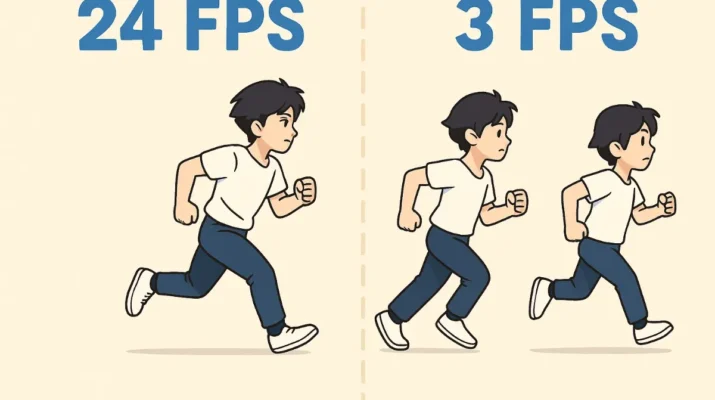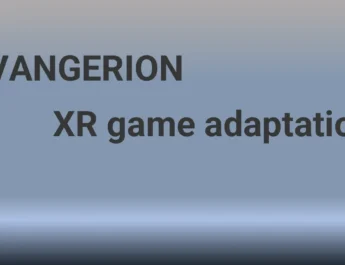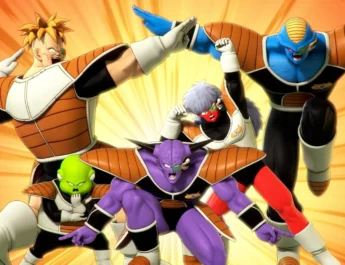Since the pioneering days of Osamu Tezuka, Japanese anime studios have standardized on 24fps (often implemented as “3-cell shooting”). In this article, we explore the historical background, technical pros and cons, why this unique approach took hold, and how digital innovation may reshape frame-rate practices in the future.
Contents
Animation Frame Rates Explained
24fps vs. 12fps (3-Cell Shooting)
“24fps” captures 24 unique frames per second—the cinematic standard—delivering ultra-smooth motion. In TV anime, studios reuse each cel for three frames (“3-cell shooting”), yielding 8 distinct drawings per second while dramatically reducing labor.
- Visual Smoothness: Full 24 unique frames per second provides the smoothest motion but greatly increases staff workload.
- Creative Techniques: Even with 3-cell shooting, animators allocate more unique frames to walks, camera pans, or key moments—sometimes sprinkling in 1-frame cuts for dramatic effect.
Balancing Cost and Quality
Producing 24 new drawings per second means 1,440 drawings per minute—an immense cost in time and wages.
- Production Cost: 3-cell shooting cuts animation labor to roughly one-third, freeing budget for background art, effects, and sound design.
- Focused Impact: Key or climactic scenes often use full 24fps (1-frame cuts) to emphasize subtle motion and expressions.
- Quality Maintenance: Under tight TV schedules and budgets, 3-cell shooting delivers consistent quality at scale.
Examples from Japanese Studios
Tezuka Productions, Toei Animation, Kyoto Animation & MAPPA
- Tezuka Productions: 1960s Astro Boy episodes prioritized facial expressions and lip-sync, using 3-cell shooting for action.
- Toei Animation: 1970s–80s Dragon Ball employed 2-cell (and occasional 1-cell) shooting in battle scenes for extra impact.
- Kyoto Animation: Since the 2000s, flexibly mixes 1-, 2-, and 3-cell shooting per scene to balance delicate character motion and detailed backgrounds.
- MAPPA: Modern digital pipelines include AI-assisted in-between generation, effectively adding 24fps-level smoothness atop traditional 3-cell techniques.

Comparison with Western Animation
Disney & Cartoon Network Frame Rates
- Disney Feature Films: Have long used true 24fps to achieve cinematic fluidity.
- Cartoon Network TV Series: Relied on 12fps (“limited animation”) through the ’90s to cut costs, similar in spirit to Japan’s 3-cell shooting but less consistent.
- Quality vs. Budget: Western studios typically separate theatrical (24fps) and TV (12fps) standards, whereas Japanese TV anime uniformly applies 3-cell shooting across most series.

The Future of 24fps in the Digital Age
With AI-powered interpolation and 3D/2D hybrid workflows, studios can achieve higher effective frame rates at lower cost:
- AI In-betweening: Generates intermediate frames from a few key drawings, approximating 24fps smoothness.
- 3D & 2D Blending: Renders backgrounds or effects in 3D while retaining hand-drawn 3-cell animation where it matters most.
- Preserving Anime’s Aesthetic: Beyond cost savings, 3-cell shooting remains an artistic choice—its distinctive pacing and visual rhythm define the “anime feel.”



